
-
2011-02-03, 11:13 PM
#191

 作者: remo

人聲跟樂器一起的,幾乎都沒辦法錄音?為什麼?:^)
我前面說的那張唱片就是有人演唱的!:O
幾乎所有的人聲唱片都需要有單獨的麥克風。即使宣稱是單點錄音的Chesky唱片,人聲也都會另外用一個麥克風收錄。原因很簡單,人聲的音量太小了,難以跟樂器取得平衡。
-
-
2011-02-03, 11:38 PM
#192

有個說法,
錄音沒有視力幫忙,
所以錄音要比現場 over 一些,
才能更接近現場.
-
The Following 2 Users Say Thank You to hojuiyang111 For This Useful Post:
-
2011-02-03, 11:47 PM
#193

 作者: hojuiyang111

有個說法,
錄音沒有視力幫忙,
所以錄音要比現場 over 一些,
才能更接近現場.
哦!原來hojuiyang也是over一派
難怪Studer C37愈抄愈貴
-
-
2011-02-03, 11:56 PM
#194

 作者: TISvili

哦!原來hojuiyang也是over一派
難怪Studer C37愈抄愈貴
可能吧?
以大訊息量來逼近現場,可能會有此傾向?
開眼及閉眼現場有不小的差別.
聽音響,開眼,關燈及閉眼其實也有不小的差別.
-
The Following User Says Thank You to hojuiyang111 For This Useful Post:
-
2011-02-04, 12:06 AM
#195

 作者: martin

幾乎所有的人聲唱片都需要有單獨的麥克風。即使宣稱是單點錄音的Chesky唱片,人聲也都會另外用一個麥克風收錄。原因很簡單,人聲的音量太小了,難以跟樂器取得平衡。
那如果就以音量大小,將人聲跟樂器以距離麥克風的“遠、近”來作位置上的配置,應該可以吧?!:^)
我那張聽起來,弦樂、打擊樂器就似乎有些距離,人聲的音像就滿大的,而且明顯的感覺到歌手投入演唱時搖頭晃腦所造成的歌聲搖晃!:o
其實這種錄音方式,可能對流行音樂或類似的音樂類型不適合,因為流行音樂相當重視很細膩的東西,如果要用假人頭錄音,勢必為了整體音場的完整,而放棄對那些細膩的補捉,而這對市場是個考驗!要不就像我那張配器上就很單純的幾支弦樂器,簡單的打擊樂器,跟輕柔的曲風〈聽起來還真是催眠曲 〉 〉
-
-
2011-02-04, 03:50 AM
#196

錄音地點:加州 Athenaeum Music & Arts Library
有興趣的就加減看看... :)
http://www.youtube.com/watch?v=Gcy1l...yer_detailpage
-
-
2011-02-04, 04:09 AM
#197

麥克風的位置...:)
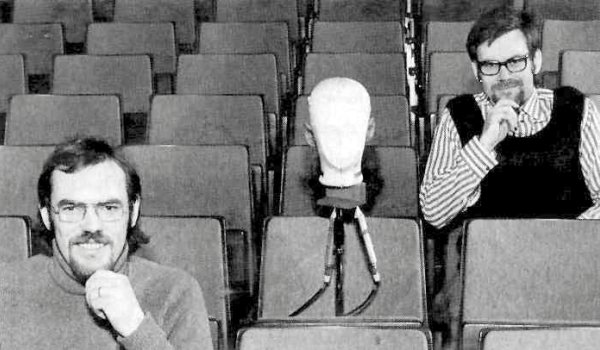
許多神話來自於信口開河... |-)
神話:(1)關於天地的初創、神靈的奇蹟,以及說明風俗習慣、儀禮和信仰的起源與意義的故事。多為先民對古代自然現象和社會生活的一種天真解釋和美麗的嚮往,富有浪漫主義的精神。
(2)荒誕無稽之談。
信口開河:不加思索的隨意亂說。相似詞:口不擇言、胡說八道、胡言亂語、輕諾寡信、信口雌黃、一簧兩舌。相反詞:守口如瓶、三緘其口、一諾千金、言必有據、言之鑿鑿。
-
-
2011-02-04, 04:30 AM
#198

Bowers & Wilkins Sound Lab
A history of binaural recording 有興趣的就加減看看... :)
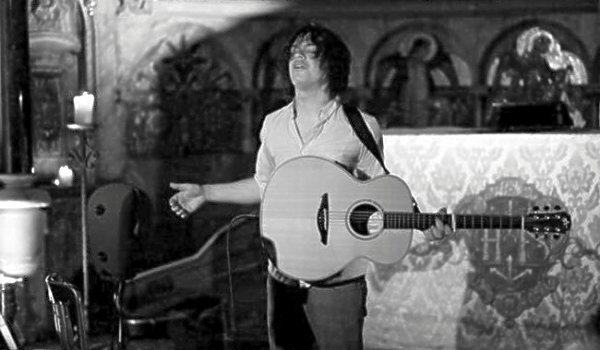
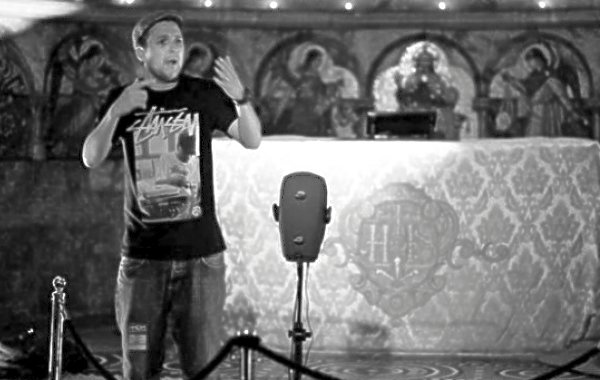
-
-
2011-02-04, 04:56 AM
#199

Visiting Vivaldi in Venice
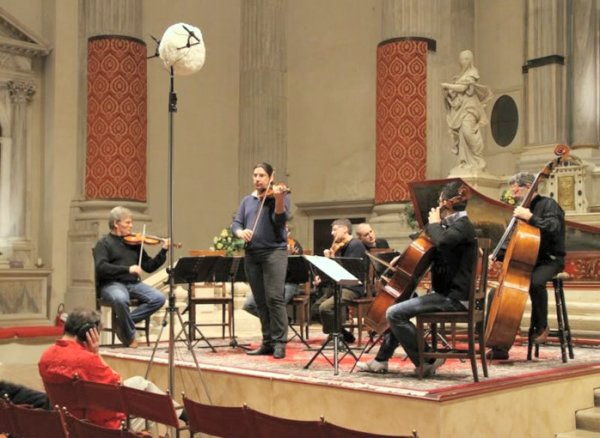
And now to the actual recording technique. There are many. You can use a Decca Tree, Blumlein, AB, XY, NOS, ORTF, Jecklin OSS, Sound Field and even a Dummy Head , all with their pros and cons. Let’s go over some of them.
Using two mics as a crossed pair or XY is a common technique. The mics are placed so that the capsules are above each other at an angle of between 90° to 120°. Their response pattern is cardioid (heart-shaped). The problem with this technique is that the stereo image can be a little narrow and you do not pick up a lot of ambience. Also center images appear a little louder than they are in real life.
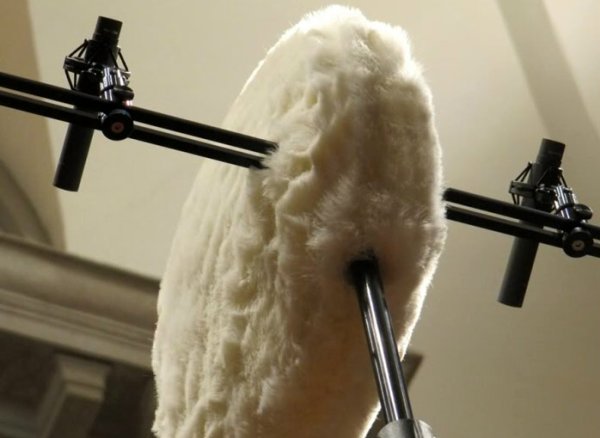
AB can use two omni-directional mics spaced at up to several meters apart. This system is outstanding for recording the ambience of a venue but does not reproduce a precise stereo image. This is what Decca originally used but they added a third mic in the center to improve stereo localization.
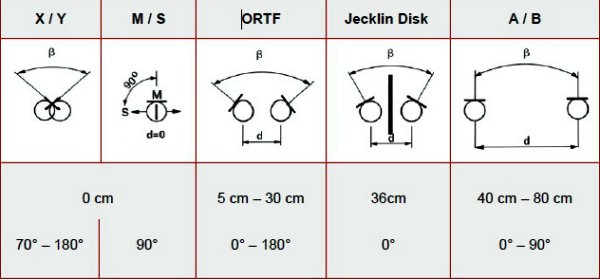
ORTF was invented by French radio many years ago. Here two cardioid mics are placed at 110° and 17 centimeters apart, more or less the distance between a pair of human ears. This system usually guarantees very good results and many people use this especially where there is very little time to experiment with microphone positions.
Interesting Websites:
http://www.interpretiveneziani.com
http://www.schoeps.de/en/home
http://www.gearslutz.com
http://www.valentinefilms.com
The music clips: 1, 2, 3.
更多報導圖文...有興趣的就加減看看... :)
Visiting Vivaldi in Venice -1
Visiting Vivaldi in Venice -2
Visiting Vivaldi in Venice -3
-
The Following 3 Users Say Thank You to DaYeh For This Useful Post:
-
2011-02-04, 05:41 AM
#200

 作者: DaYeh

Visiting Vivaldi in Venice

And now to the actual recording technique. There are many. You can use a Decca Tree, Blumlein, AB, XY, NOS, ORTF, Jecklin OSS, Sound Field and even a Dummy Head , all with their pros and cons. Let’s go over some of them.
Using two mics as a crossed pair or XY is a common technique. The mics are placed so that the capsules are above each other at an angle of between 90° to 120°. Their response pattern is cardioid (heart-shaped). The problem with this technique is that the stereo image can be a little narrow and you do not pick up a lot of ambience. Also center images appear a little louder than they are in real life.

AB can use two omni-directional mics spaced at up to several meters apart. This system is outstanding for recording the ambience of a venue but does not reproduce a precise stereo image. This is what Decca originally used but they added a third mic in the center to improve stereo localization.

ORTF was invented by French radio many years ago. Here two cardioid mics are placed at 110° and 17 centimeters apart, more or less the distance between a pair of human ears. This system usually guarantees very good results and many people use this especially where there is very little time to experiment with microphone positions.
Interesting Websites:
http://www.interpretiveneziani.com
http://www.schoeps.de/en/home
http://www.gearslutz.com
http://www.valentinefilms.com
The music clips: 1, 2, 3.
更多報導圖文...有興趣的就加減看看... :)
Visiting Vivaldi in Venice -1
Visiting Vivaldi in Venice -2
Visiting Vivaldi in Venice -3
http://www.my-hiend.com/vbb/album.ph...ictureid=13338
噢,原來巨人是從矮子變,請問幾時該爬梯,幾時該掛羊(毛)頭
又,x/y是心形噢,那就没了單点omni的天生平直曲綫
老師,您舉那么多例子,是否打算同時把這五種以上的擺mic放法,
一同時錄下,讓我們帶回家做功課
-
 發文規則
發文規則
- 您不可以發表新主題
- 您不可以發表回覆
- 您不可以上傳附件
- 您不可以編輯自己的文章
-
討論區規則
|